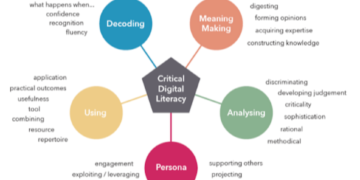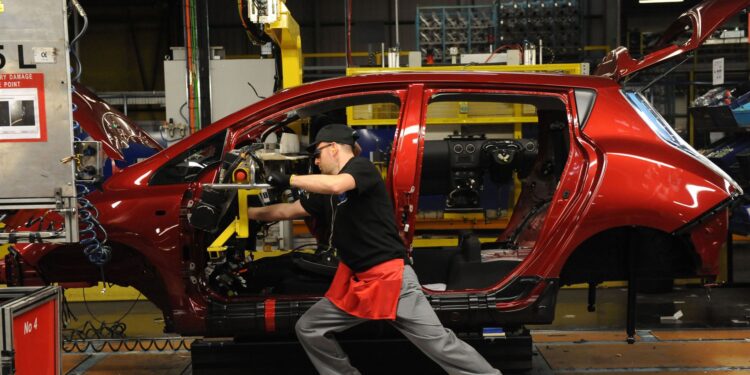Carmakers and Engineers Cheer UK, US Trade Deal as Steel and Auto Tariffs Slashed.
Why This Deal Matters Imagine a world where sleek
new cars roll off production lines with fewer tariffs slowing them down.
Cheaper steel, smoother auto parts flow, and a handshake deal that gets industry giants moving.
That world just became a little more real thanks to the UK, US trade agreement that cut tariffs on steel and autos.
For carmakers and engineers on both sides of the Atlantic, this means not just lower costs,
The Heart of the Agreement The UK, US trade deal cuts or removes tariffs on a range of goods,
This makes steel imported from the US to UK factories, and vice versa, much cheaper.
For carmakers relying on a global supply chain to get raw materials and components, this is crucial.
Why Steel and Autos Were Key Categories Steel is essential in car manufacturing.
It is used in frames, doors, hoods, and more.
Tariffs on steel had added costs to making cars.
By focusing on these categories, the deal targets the core of the
auto industry’s cost structure. Immediate Benefits:
Carmakers See Lower Production
Carmakers See Lower Production Costs Lower steel tariffs lead to reduced per-vehicle production costs.
A manufacturer building cars in the UK or importing components from the US will now pay less.
This could mean higher margins or, better yet for consumers, lower prices at the showroom.
For those assembling in the US and exporting to the UK,
removing auto tariffs lowers barriers to entering European markets via UK distribution.
This could open up new markets without adding extra costs.
Gain Flexibility With reduced or removed tariffs, sourcing materials gets easier.
Engineers can find better-quality or specific types of steel
Supply chain managers can vary suppliers across the Atlantic without
worrying about high tariff costs, which leads to better resilience and optimization.
Supply Chains, Competition, Innovation Supply Chains Become More Integrated and Resilient
A freer flow of steel and auto parts between borders allows supply chains to expand across continents without breaking the bank.
UK companies might source US steel for certain high-grade applications
reduce delays, and provide a buffer against local shortages.
Increased Competition
Increased Competition — Which Could Lower Prices As it becomes easier to enter markets,
more manufacturers may compete in the same spaces.
This competition can drive innovation and price reductions, benefiting consumers.
Incentive to Modernize — Toward Greener,
Efficient Cars With savings from the tariffs, carmakers might reinvest in research and development.
This includes lighter steel alloys, electric vehicle components,
or more efficient manufacturing processes.
Lower entry costs combined
Lower entry costs combined with a push for innovation may speed up the shift toward greener,
smarter automotive technologies. Real-World Reactions: How Carmakers Are Responding H2:
Many plan to review their supply contracts, sourcing strategies, and even final sale pricing in response to the tariff changes.
Some are looking into expanding production or diversifying sourcing to fully benefit from the deal.
For buyers, this means more value for their money:
better-equipped cars at competitive prices or smaller premiums for imported vehicles. Potential Challenges and Criticisms.
Domestic steel mills or smaller auto part manufacturers could struggle
Geopolitical changes, logistical issues,
Environmental and Labor Concerns Cheaper steel imports might encourage more production,
depending on the source of the materials and manufacturing practices.
What This Means for Consumers — And Why They Should Care:
More Car Options, Possibly at Lower Prices
More Car Options, Possibly at Lower Prices With reduced costs, manufacturers might offer more competitive pricing or improved trim options at the same price point.
H3: Better Innovation and Upgrades Over Time As manufacturers reinvest their savings, we may witness faster adoption of new technologies. This includes lighter materials, improved safety features, or more efficient engines. Over time, this could lead to cars that are better built, safer, more efficient, and potentially more affordable. Looking Ahead: Long-Term Impacts on the Auto Industry H2:
A New Era of Cross-Atlantic Collaboration
A New Era of Cross-Atlantic Collaboration The tariff cuts may foster joint ventures, cross-border collaborations, and shared manufacturing standards. UK and US firms might work together on platforms, share research, and streamline vehicle design and production across the Atlantic.
Pressure on Other Markets
Pressure on Other Markets to Adapt As UK, US auto flows become more efficient, other global players—like EU, Asian, or South American manufacturers—may need to reevaluate their tariffs, supply chain costs, and competitive advantages. This could impact global automotive pricing and competition.
H4: Possibility of Extending Trade Benefits to EV Sector and Beyond The auto industry is shifting toward electric vehicles. Over time, this could promote EV adoption and accelerate changes in the industry.
Conclusion:
A Deal That Revvs Up Opportunity — With Caution The UK, US trade deal that cuts steel and auto tariffs marks a significant milestone. For carmakers and engineers, it opens the door to lower costs, supply chain flexibility, and innovation.
For consumers, it offers more choices, potential savings, and better cars over time. That said, benefits come with trade-offs. Increased competition could harm local producers, supply chain interdependence might heighten global risks, and environmental or labor issues require careful oversight. It paves a way toward a more integrated, competitive, and possibly groundbreaking automotive industry. How smoothly vehicles navigate that path depends on how wisely manufacturers, regulators, and consumers proceed.










































